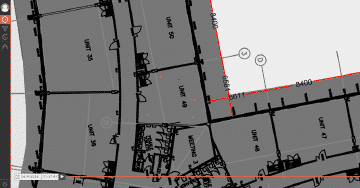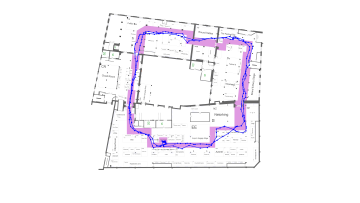When will Cisco and Aruba switch on WiFi RTT for Indoor Positioning?

Android Pie is now released, and one of the talked about new features is ‘Wifi RTT’. The press are pretty excited…
Here’s are some features described by Forbes:
- Maps with routing features to help people find their way through confusing indoor locations can be built with WiFi RTT. Google notes that WiFi RTT can also be used for things like location-based voice control (“Turn on this light”). Or information retrieval (“Do any online stores have specials for this product.”)
WiFi signals are already used for indoor location. Google and Apple crowdsource access point locations, and then use signal strengths to estimate location. It’s not that accurate, but it’s better than nothing. However WiFi RTT makes the whole thing much more precise.
Google’s aim here is for their own ‘Fused Location’ provider, to use WiFi RTT. This would vastly increase the accuracy of indoor location. This benefits Google maps, the whole Google ecosystem, and any apps running on Android. That’s ‘a few years off’ in Google’s words so in the meantime, they’ve introduced the feature into Android Pie for developers to use in apps.
A full transcript of Google’s talk on this is here
However right now, there’s no way for Google, or for app developers, to actually deliver any of this. RTT needs to be supported on both mobile device and access point. And as far as we know there just aren’t any installed access points in the US or Europe that currently do this.
Where we come in….
At Crowd Connected we’ve already implemented WiFi RTT capability into our software. But we’ve had to test this with customised hardware. As Android Pie starts hitting people’s phones, we’ll be able to improve indoor location accuracy from around 10m down to an incredible 1-2m. So we’re impatient to know how WiFi RTT is likely to play out commercially over the next few years.
Will access point providers quickly enable all of their hardware? Will they look to charge additional licence fees? Will they launch their own location services based on RTT? How long will it take for Google’s Fused location to work accurately, indoors, everywhere in the world? And is that even possible?
The GPS & Wi-Fi Comparison
It’s interesting to compare GPS and WiFi RTT. The two systems have big differences. But both work by measuring the time it takes for a radio signal to travel between infrastructure in a known location and a mobile device. In one case the satellite, in the other, the access point. In both systems the positioning is done on the mobile device and the infrastructure is not capable of tracking it.
A slight difference is that GPS is ‘one-way’. The satellites continually broadcast signals. But the system doesn’t even know whether a device is receiving them or not. RTT infrastructure responds to a request from a mobile device. So the access point knows that a device is ‘scanning’. But the protocol ensures that it can’t know the identity of the device.
How this affects manufacturers
This is a big change for the access point providers. Previously, locating devices from WiFi signals was only possible using signal strengths. And this can be done at the access point. In fact when trying to locate iOS devices, it can only be done at the access point. So manufacturers like Cisco and Aruba provide indoor location systems that can locate mobile devices.
The nature of the WiFi RTT makes it very difficult for manufacturers to retain control. If they wish to allow a licensed mobile device to receive signals, they can’t then prevent another unlicensed device from receiving signals. 802.11mc insists that privacy is paramount, and the AP can’t know the identity of the device making a request.
Maybe they will accept that they can’t monetise downstream services delivered using RTT, so will charge a premium for switching on the signals.
However, competitive pressure will put a relatively low ceiling on the possible premium they can charge. There are already sub $200 access points on the market from niche providers that implement WiFi RTT. They may not offer all the infrastructure features of Cisco and Aruba equipment. But it does make it unlikely the big players could charge more than $200 per access point to switch on WiFi RTT signals. If they do, they’d make the option of installing a second access point just for WiFi RTT in each location look attractive.
Maybe the market leaders will play the role of knowing access point positions. Just as the GPS system needs to make public the satellites’ location at any time, the hardware providers could use their existing network infrastructure management tools to store, update and publish access point locations. And they could do this commercially. That would put them in competition with Google, who want to own the big cloud database of access point locations, because their maps, their search and Android apps will work better.
Or maybe the network infrastructure players will look to build or acquire mobile SDK based indoor positioning services that utilise RTT, so that they can still commercialise location services that ultimately rely on signals coming from their hardware.
Or maybe manufactures will see these signals like GPS. GPS is given free to the world by the US military. They set up the system, and anyone with a receiver can utilise the signals. No charge. No privacy concerns. No licence conditions.
Why can’t Wi-Fi be more like GPS?
A 2015 Aruba presentation (Deep dive Radio technologies for indoor location) asked ‘Why can’t Wi-Fi be more like GPS?’ highlighting the accuracy of GPS, and its one-way nature, removing privacy concerns. If Aruba start enabling WiFi RTT signals by default, maybe it can be.
An interesting further development is 802.11az. This represents a next generation (WiFi 6) with even more accurate location. Built into the standard is a mechanism for access points to locate mobile devices. But only if this is permissioned. That might tell us something about the direction the manufacturers are taking.
In the meantime, Compulab already have RTT responders available, and we’ve been using their hardware for testing. Google have promised their WiFi will be RTT enabled ‘this year’. So AP’s are becoming available, and Crowd Connected will be using them to deliver 1-2m accurate indoor location for our customers in 2019. This won’t use existing infrastructure. It will involve installation of additional access points like Compulab’s.
There’s a much better solution for use in large public spaces, that have complex managed wifi installations already in situ. But, it’s over to Cisco and Aruba to switch on the signals. And they may be waiting until they’ve figured out the commercials.


